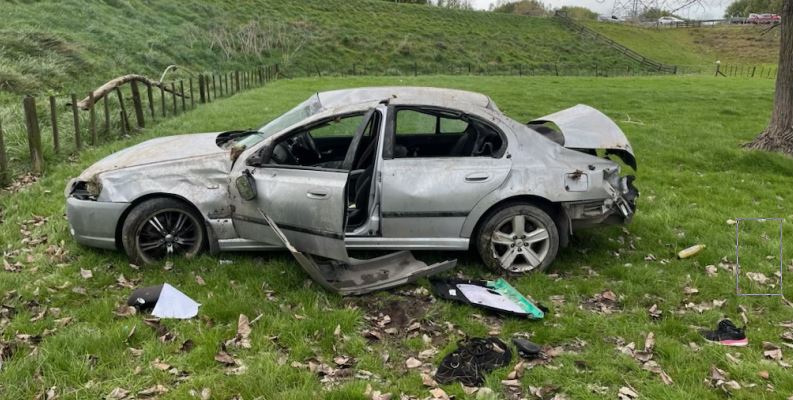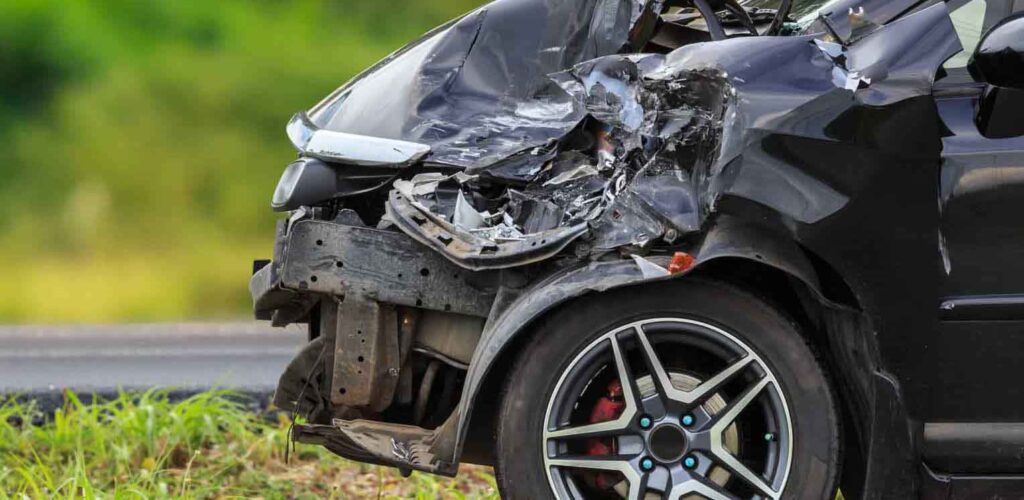Wellington’s road safety concerns reflect a broader national challenge, with consistent fatalities every year and key trends emerging across age, location, and causes. Understanding these patterns is essential for crafting effective interventions to save lives.
High-Risk Groups: Who Is Most at Risk?
Young drivers aged 15–24 years old are disproportionately involved in fatal road crashes, representing approximately 30% of annual fatalities nationwide. This age group is often linked to higher instances of reckless driving, speeding, and impaired judgement, including driving under the influence of alcohol or drugs. Additionally, male drivers dominate fatality statistics, comprising nearly 75% of road deaths, reflecting global trends where men are more likely to engage in risky driving behaviours.
Picture source: Stuff
Vulnerable road users, such as pedestrians and cyclists, also face significant risks, particularly in urban areas with high traffic density. In 2023, pedestrian fatalities accounted for 10% of Wellington’s road deaths, with many incidents occurring at intersections or poorly lit areas.
Wellington’s Crash Hotspots
While Wellington City’s central areas have relatively fewer fatal crashes due to lower speed limits, rural and semi-urban zones report the most severe incidents. Key hotspots include:
State Highway 1: Sections near Johnsonville and Ōtaki witness frequent collisions, often involving high-speed vehicles.
Kapiti Coast Roads: Narrow lanes and poor visibility contribute to accidents in this region.
Motorways Near Lower Hutt: High traffic volumes and merging lanes increase risks.
Rural roads in particular see elevated fatality rates due to limited safety features, including inadequate signage and lack of barriers.
Crashes Per Month: Seasonal Trends
Wellington averages 20–25 road crashes monthly, with two or more resulting in fatalities. Crashes typically rise during holiday periods such as Christmas and Easter, when more vehicles are on the road and driver fatigue becomes a factor. Adverse weather, including Wellington’s notorious wind and rain, also exacerbates crash risks during the winter months.
Picture source: nzherald.co.nz
Primary Causes of Fatal Accidents
Several factors contribute significantly to Wellington’s road fatalities:
Excessive Speed: Involved in 30% of crashes, speeding reduces reaction times and increases crash severity.
Impaired Driving: Alcohol and drug consumption contribute to 25% of road deaths. Late-night and early-morning crashes are especially common among impaired drivers.
Distractions: Mobile phone use is a growing concern, with distracted driving leading to both minor and fatal incidents.
Fatigue: Long-distance travel and late driving hours disproportionately impact rural areas.
Poor Infrastructure: Narrow, winding roads and ageing vehicles in rural zones further elevate risks.
Picture source: Wellington.scoop.co.nz
Annual Fatalities: Wellington in Context
In 2023, Wellington recorded 35 road fatalities, mirroring its five-year average. While the region fares better than high-risk areas like Northland, where road deaths are significantly higher, the toll remains a concern. Nationally, New Zealand saw over 350 fatalities in 2023, with Wellington contributing roughly 10% to this figure.
Socioeconomic and Regional Disparities
Deprivation plays a role in road safety. Residents in lower-income areas are twice as likely to die in crashes compared to those in wealthier neighbourhoods. Factors such as older, less crashworthy vehicles and limited access to safer roads exacerbate this disparity.
Additionally, rural areas pose a threefold higher risk than urban centres. Poor road conditions, lack of safety barriers, and delayed emergency response times contribute to this elevated risk. Nationally, urban areas like Wellington City see lower mortality rates, but nearby rural districts often make up for these differences.
A Glimpse into Solutions
Efforts to reduce road fatalities in Wellington include:
Improved Infrastructure: Upgrades to highways and rural roads aim to enhance safety features like median barriers and rumble strips.
Awareness Campaigns: Education targeting young drivers about speeding and impaired driving.
Stricter Laws: Enforcement of drink-driving limits and penalties for mobile phone use while driving.
Technological Advancements: Encouraging adoption of modern vehicles equipped with advanced safety features like automatic braking systems.
Conclusion
Wellington faces significant challenges in reducing road fatalities, particularly among young drivers and in rural areas. A data-driven approach that addresses infrastructure, driver behaviour, and vehicle safety is essential for making meaningful progress. By understanding these trends and implementing targeted interventions, policymakers can work towards safer roads for all Wellingtonians.
CONTRIBUTE
Have stories, yarns, mad scoops, or community news to share. We often pay for awesome content and life shattering stories. What have you witnessed?


